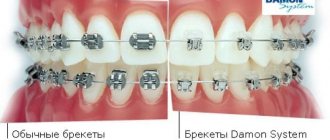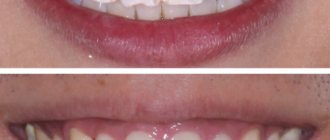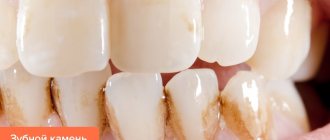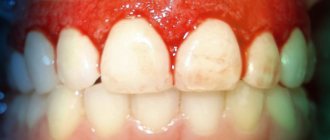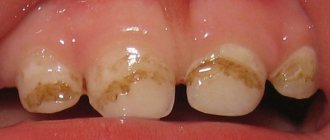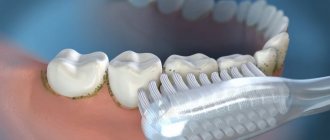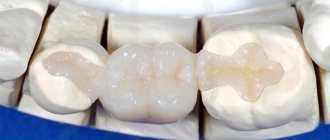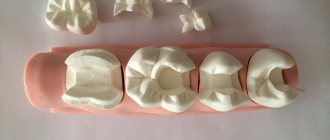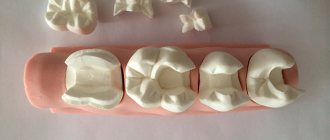General information about zirconium
This element belongs to the secondary subgroup of the 4th group of the 5th period of the periodic system of D.I. Mendeleev - atomic number 40. Zirconium in its usual form is a shiny metal, which is distinguished by a silver-gray color, is ductile and resistant to corrosion. Compounds of this substance are widespread in the lithosphere. In nature, zirconium compounds are known exclusively with oxygen in the form of silicates and oxides.
Despite the fact that zirconium is a trace element, up to 40 miners are known in which this substance is present in the form of salts and oxides. This is a universal gemstone, but this opinion is wrong. Although, in appearance it is even similar to a diamond. A few facts about this substance:
- Zirconium is produced only in laboratory conditions, and the mineral zircon is used as the main component.
- Although zirconium is a transparent stone, due to the use of additional impurities, various shades are obtained.
- It is used in jewelry as a replacement for minerals and jewelry, due to which the price of the final product becomes significantly lower.
Many people are confused and believe that cubic zirconia, zircon, zirconium are the same substance. In fact, they are all different, just similar in composition to each other:
- Zirconium is a metal that is similar in appearance to steel.
- Cubic zirconia is a man-made brilliant crystal. In terms of external characteristics, it is similar to a diamond. Zirconium oxide is used for production - the process is carried out under the influence of temperatures above 2.5 thousand degrees.
- Zircon is a stone that is similar to gold. It is of natural origin and looks expensive.
How it was opened
The history of the discovery of metal spans a century and a half:
- Dioxide of the substance was first obtained by the German chemist Martin Klaproth (1789). The source was the mineral zircon.
- Almost forty years later, his Swedish colleague Jens Berzelius obtained free, but contaminated zirconium.
- Samples of zirconium as a pure metal were isolated by 1925 by the Dutchman Anton van Arkel.
The origin of the term “zircon” is interpreted in two versions: from consonant Arabic or Farsi. They mean "cinnabar" and "golden" respectively.
History of zirconium stone
In terms of its attractiveness, this stone is not inferior to many precious analogues. It has been used since ancient times. During the dominance of Ancient Persia, all types of stones were almost devalued with the exception of transparent ones and those that had the characteristic shine of a diamond. In Asian countries, the stone became a talisman for local residents and visiting Russian merchants, who took zirconium products (especially beads) to their home to supplement their daughters' dowry.
In Europe, this material was not given much importance until the 19th century. Only swindlers and swindlers of those times sold cut transparent zirconium products under the guise of diamonds to high society ladies who did not understand jewelry. In addition, it was confused with sapphire, tourmaline and topaz due to its abundant color palette, and colorless stones began to be called “Ceylon diamonds” - they were cheaper and were considered second-class.
In the industrial field, this type of stone began to be used only in the 30s of the last century - widespread use was significantly limited by high costs. Today, zircon and its various compounds and alloys are used in construction, metallurgy, medicine and even nuclear energy. Bone and dental prostheses and surgical instruments are made from this mineral.
In the last century, Soviet scientists, trying to grow an artificial diamond, managed to grow artificial zirconium - it was called “zircon” or “cubic zirconia”. After the discovery was made, the cost of the stone decreased significantly, because... artificial synthesis always causes serious damage to any jewelry. Zirconium is not inferior in its characteristics to many precious stones, but for several decades it has occupied a niche in the middle price category.
Production[edit]
Zirconium production in 2005
Zirconium is a by-product of the mining and processing of the titanium minerals ilmenite and rutile, as well as tin mining. [18] From 2003 to 2007, while mineral zircon prices rose steadily from $360 to $840 per ton, the price of raw zirconium metal decreased from $39,900 to $22,700 per ton. Zirconium metal is much more expensive than zircon because the reduction processes are expensive. [15]
Zircon-containing sand collected from coastal waters is purified by spiral concentrators to remove lighter materials, which are then returned to the water as they are natural components of beach sand. Magnetic separation removes the titanium ores ilmenite and rutile.
Most zircon is used directly for commercial purposes, but a small percentage is converted into metal. Most Zr metal is produced by reducing zirconium(IV) chloride from magnesium metal in the Kroll process. [8] The resulting metal is sintered until it is ductile enough for metal working. [7]
Separation of zirconium and hafnium[edit]
Commercial zirconium metal typically contains 1–3% hafnium [19], which usually does not cause problems, since the chemical properties of hafnium and zirconium are very similar. However, their neutron absorption properties vary greatly, necessitating the separation of hafnium from zirconium for nuclear reactors. [20] Several separation schemes are used. [19] Liquid-liquid extraction of thiocyanate-oxide derivatives exploits the fact that the hafnium derivative is slightly more soluble in methyl isobutyl ketone than in water. This method is used mainly in the USA.
Zr and Hf can also be separated by fractional crystallization of potassium hexafluorozirconate (K 2 ZrF 6 ), which is less soluble in water than the similar hafnium derivative.
Fractional distillation of tetrachlorides, also called extractive distillation, is used primarily in Europe.
The product of the quadruple VAM (vacuum arc melting) process combined with hot extrusion and various types of rolling is cured using high pressure and high temperature gas autoclaving. The result is reactor-grade zirconium, which is approximately 10 times more expensive than commercial hafnium-contaminated zirconium.
Hafnium must be removed from zirconium for nuclear applications because hafnium has a neutron absorption cross section 600 times larger than zirconium. [21] The separated hafnium can be used for reactor control rods. [22]
Types of stone
Zircon is rightly considered one of the oldest precious minerals on Earth, because. Scientists have found that the age of this element reaches 3-4 billion years. Currently, several types of zirconium are isolated. The main criterion for this division is the variety of stone colors. The following varieties are distinguished:
- Starlit. A transparent stone, obtained by firing, has a bluish or blue tint.
- Malacon. It is dark brown in color and contains a small dose of radiation.
- Hyacinth. A transparent mineral characterized by brown, orange, and red colors.
- Matar Diamond. Transparent, colorless, extracted from the depths of the island of Matara - hence the name of this variety.
- Jargon. A mineral characterized by a straw, yellow or slightly golden color.
In addition, zirconium can be presented in the form of metal or powder - the scope of their application often differs. For example, the first is used for making jewelry, and the second is used in the medical and industrial fields. More information about these varieties:
- Hard metal. It has a shiny silver-gray tint and has a high degree of plasticity.
- Powder. A characteristic feature is the presence of small granules. Has a dark blue tint.
When heated, Zirconium can change color, allowing jewelers to give finished products a variety of shades. This mineral is:
- white (transparent, the most common);
- blue;
- blue;
- black (extremely rare);
- olive;
- green;
- pink;
- red;
- yellow (has the most pronounced radioactive background);
- brown (weak radiation);
- orange;
- purple.
Content
- 1 Characteristics 1.1 Isotopes
- 1.2 Emergence
- 2.1 Separation of zirconium and hafnium
- 3.1 Oxides, nitrides and carbides
- 5.1 Connections
Physical and chemical properties of zirconium
The structure of the mineral often contains impurities of other elements, for example, iron, copper, calcium, titanium, zinc, etc. More often, zircon is transformed into pyramidal or prismatic crystals. The mineral often contains uranium, which is why specimens with high background radiation are found. In terms of hardness, it is inferior to the competitors of its group - it is not durable against impacts or tearing. If stored carelessly, chips will fly off the stone, which will ruin the original aesthetic appearance. Physical and chemical properties:
- When intensely heated, it changes color, so the final product can have dark brown, bright turquoise and other shades. Over time, the shades obtained by thermal exposure fade and disappear completely.
- Cannot be cold processed under pressure.
- Instantly begins to oxidize at temperatures of 200-400℃.
- Great chemical resistance. Does not dissolve in acids, alkalis, does not corrode. When entering the human body, it does not interact with organs and tissues.
- The mineral produces dust, which becomes a threat to human life. This is due to the fact that it is easily flammable even from interaction with air.
- It melts at a temperature of 1825℃, and boils at 3500℃ and above.
- Under normal storage conditions, when the temperature is about 20℃, the density of the material is 6.45 g/cm3.
Links[edit]
- Mejja, Juris; and others. (2016). "Atomic Weight of Elements 2013 (IUPAC Technical Report)". Pure and applied chemistry
.
88
(3):265–91. DOI: 10.1515/pack-2015-0305. - "Zirconium: data on the fluoride compound zirconium(I)". OpenMOPAC.net. Retrieved December 10, 2007.
- Lide, DR, ed. (2005). "Magnetic susceptibility of elements and inorganic compounds." CRC Handbook of Chemistry and Physics (PDF) (86th ed.). Boca Raton (FL): CRC Press. ISBN 0-8493-0486-5.
- Pritychenko Boris; Tretyak, V. "Accepted data on double beta decay". National Nuclear Data Center. Retrieved February 11, 2008.
- Harper, Douglas. "zircon". Online Dictionary of Etymology
. - ^ abcd Emsley, John (2001). The Building Blocks of Nature
. Oxford: Oxford University Press. pp. 506–510. ISBN 978-0-19-850341-5. - ^ abcde "Zirconium". How products are made
. Advameg Inc. 2007. Retrieved March 26, 2008. - ^ abcdefghijk Lide, David R., ed. (2007–2008). "Zirconium". CRC Handbook of Chemistry and Physics
.
4
. New York: CRC Press. paragraph 42. ISBN 978-0-8493-0488-0. - Considine, Glenn D., ed. (2005). "Zirconium". Van Nostrand Encyclopedia of Chemistry
. New York: Wylie-Interscience. pp. 1778–1779. ISBN 978-0-471-61525-5. - Winter, Mark (2007). "Electronegativity (Pauling)". University of Sheffield. Retrieved March 5, 2008.
- ↑
Schnell I & Albers RC (January 2006).
"Zirconium under pressure: phase transitions and thermodynamics". Journal of Physics: Condensed Matter
.
18
(5): 16. Bibcode: 2006JPCM ... 18.1483S. DOI: 10.1088/0953-8984/18/5/001. - ^ abc Audi, Georges; Bersillon, Olivier; Blachot, Jean; Wapstra, Aaldert Hendrik (2003), "Estimating Nuclear and Decay Properties of N UBASE", Nuclear Physics A
,
729
: 3–128, Bibcode: 2003NuPhA.729…. 3A, doi: 10.1016/j.nuclphysa.2003.11 0.001 - ^ ab Peterson, John; McDonell, Margaret (2007). "Zirconium". Radiological and Chemical Fact Sheets to Support Health Risk Analysis of Contaminated Sites (PDF). Argonne National Laboratory. pp. 64–65. Archived from the original (PDF) on May 28, 2008. Retrieved February 26, 2008.
- "Zirconium and Hafnium - Mineral Resources" (PDF). 2014
- ^ ab "Zirconium and hafnium" (PDF). Mineral Review
: 192–193. January 2008. Retrieved February 24, 2008. - Ralph, Jolyon and Ralph, Ida (2008). "Minerals containing Zr". mindat.org. Retrieved February 23, 2008.
- Abraham, MM; Bothner, LA; Ramey, Joe; Rappaz, M. (1984-12-20). "Occurrence and stability of trivalent zirconium in orthophosphate single crystals". Journal of Chemical Physics
.
81
(12):5362–5366. DOI: 10.1063/1.447678. ISSN 0021-9606. - Callaghan, R. (21 February 2008). "Zirconium and Hafnium Statistics and Information". US Geological Survey. Retrieved February 24, 2008.
- ^ abcd Nielsen, Ralph (2005) "Zirconium and zirconium compounds" in Ullman's Encyclopedia of Industrial Chemistry, Wiley-VCH, Weinheim. DOI: 10.1002/14356007.a28_543
- ^ abc Stwertka, Albert (1996). Guide to the Elements
. Oxford University Press. pp. 117–119. ISBN 978-0-19-508083-4. - Brady, George Stewart; Clauser, Henry R. and Vaccari, John A. (July 24, 2002). Materials Handbook: An encyclopedia for managers, technicians, purchasing and production managers, technicians and executives. McGraw-Hill Professional. pp. 1063–. ISBN 978-0-07-136076-0. Retrieved March 18, 2011.
- Zardiackas, Lyle D.; Kraay, Matthew J. & Freese, Howard L. (January 1, 2006). Titanium, niobium, zirconium and tantalum for medical and surgical applications. ASTM International. P. 21–. ISBN 978-0-8031-3497-3. Retrieved March 18, 2011.
- Greenwood, Norman N.; Earnshaw, Alan (1997). Chemistry of elements
(2nd ed.). Butterworth-Heinemann. ISBN 978-0-08-037941-8. - ^ ab "Zirconium". AZoM.com. 2008. Retrieved March 17, 2008.
- Gauthier, V.; Dettenwanger, F.; Schütze, M. (2002-04-10). "Oxidative behavior of γ-TiAl coated with zirconia thermal barriers". Intermetallic compounds
.
10
(7): 667–674. DOI: 10.1016/S0966-9795(02)00036-5. - Jump up
↑ Keenan, P. C. (1954).
"Classification of S-type stars". Astrophysical Journal
.
120
: 484–505. Bibcode: 1954ApJ…120..484K. DOI: 10.1086/145937. - Material Safety Data Sheet for Duratec 400, DuBois Chemicals, Inc.
- Wilkinson, G.; Birmingham, J. M. (1954). "Bis-cyclopentadienyl compounds of Ti, Zr, V, Nb and Ta". Journal of the American Chemical Society
.
76
(17):4281–4284.
DOI: 10.1021/ja01646a008.; Roohi, A. Morin (2004-04-19). "The Arrival of Organozirconium Chemistry". Chemistry and technology news
.
82
(16): 36–39. DOI: 10.1021/SEP-v082n016.p036. ISSN 0009-2347. Retrieved March 17, 2008. - Wailes, P. C. & Weigold, H. (1970). "Zirconium hydride complexes I. Preparation." Journal of Organometallic Chemistry
.
24
(2): 405–411. DOI: 10.1016/S0022-328X(00)80281-8. - Jump up
↑ Hart, D. W. & Schwartz, J. (1974).
“Hydrozirconium. Organic synthesis using zirconium intermediates. Synthesis and rearrangement of alkyl zirconium (IV) complexes and their reaction with electrophiles.” Journal of the American Chemical Society
.
96
(26):8115–8116. DOI: 10.1021/ja00833a048. - ^ ab Krebs, Robert E. (1998). History and Use of Our Earth's Chemical Elements. Westport, CT: Greenwood Press. pp. 98–100. ISBN 978-0-313-30123-0.
- Headrick, James B. (1998). "Zirconium". US metal prices through 1998 (PDF). US Geological Survey. pp. 175–178. Retrieved February 26, 2008.
- "Beautiful Ceramics - Zirconium Dioxide". Kyocera Inc.
- Kosanke, Kenneth L.; Kosanke, Bonnie J. (1999), "Pyrotechnic sparking", Journal of Pyrotechnics
: 49–62, ISBN 978-1-889526-12-6 - Gillon, Luke (1979). Le nucléaire en question
, Gembloux Duculot, French edition. - Meyer, S.M.; Gupta, D. K. (1994). "The Evolution of Thermal Barrier Coatings in Gas Turbine Engines". Journal of Gas Turbine and Energy Engineering
.
116
: 250–257. DOI: 10.1115/1.2906801. - ^ abcde Lee DBN, Roberts M, Bluechel KG, Odell RA. (2010) Zirconium: biomedical and nephrological applications. ASAIO J 56(6):550-556.
- Ash SR. Sorbents in the treatment of uremia: a brief history and a great future. 2009 Semin Dial 22: 615-622
- Ingelfinger, Julie R. (2015). "A New Era in the Treatment of Hyperkalemia?" New England Journal of Medicine
.
372
(3):275–7. DOI: 10.1056/NEJMe1414112. PMID 25415806. - ^ab Schroeder, Henry A.; Balassa, Joseph J. (May 1966). "Abnormal trace metals in humans: zirconium". Journal of Chronic Diseases
.
19
(5):573–586. DOI: 10.1016/0021-9681 (66) 90095-6. PMID 5338082. - "Zirconium". International Chemical Safety Cards. The International Labour Organization. October 2004. Retrieved March 30, 2008.
- Zirconium and its compounds 1999. Collection of IAC on labor protection. 224–236
- "CDC - NIOSH Pocket Guide to Chemical Hazards - Zirconium Compounds (as Zr)". www.cdc.gov
. Retrieved November 27, 2015. - toxnet.nlm.nih.gov/cgi-bin/sis/search/f?./temp/~EHRbeW:2
- "ANL Human Health Fact Sheet: Zirconium (October 2001)" (PDF). Argonne National Laboratory. Retrieved July 15, 2022.
Methods for obtaining zirconium
A stone with a metallic luster and a variety of shades is obtained experimentally in specialized laboratories. It is based on zircon, the main deposits of which are located in Australia, Brazil, Vietnam, Thailand, Sri Lanka and some other countries of the world. Synthetic stone is obtained in one of the following ways:
- Fusion with soda or soda. The process is carried out at a temperature of 500 to 600℃.
- Chlorination with carbon. Performed at a temperature of 900-1000℃.
- Fusion with potassium. Performed at 900℃.
- Sintering with lime or calcium carbonate. Carried out at 1100-1200℃.
The healing properties of zirconium
Companies specializing in the manufacture of bracelets began to add particles of the Zirconium element to their products in order to give their products medicinal qualities in order to increase their sales. The bracelets supposedly lower blood pressure. It is believed that the stone can give strength and vigor throughout the day and ensure sound and healthy sleep at night. It does not change its properties when exposed to acids, therefore it is often used in the manufacture of medical instruments and equipment. More information about medicinal properties:
- accelerates wound healing;
- prevents the formation of pus;
- good antiseptic;
- has an antimicrobial property, which prevents the penetration of various infections into the body;
- prevents the penetration of radiation;
- helps relieve allergy attacks.
- Diabetes mellitus type 2 - diet and treatment: nutrition for the disease
- Fish casserole: recipes
- Chicken noodle soup recipes: step-by-step preparation
Many types of stone, according to experts in the field of lithotherapy, have a positive effect on the functioning of the thyroid gland and endocrine system. At the same time, different properties are attributed to different colors:
- Black. Helps overcome the effects of hypothermia and colds.
- Yellow and red. Increase appetite and leukocyte production.
- Brown. Able to get rid of accumulated waste.
- Blue and blue. They help remove extra pounds, improve the functioning of the digestive tract, and normalize stool and appetite. The same properties are attributed to transparent minerals.
Where is zirconium used?
The main area of application of the mineral is jewelry making. Products that are decorated with it are distinguished by their aesthetic and attractive appearance, because in beauty it is not inferior to a diamond. Earrings and necklaces with cubic zirconia are especially in demand. In addition, this stone is often used as a dummy on jewelry counters. Other applications:
- Based on this element, various alloys are made. They are used in some industries, for example, in the manufacture of structural materials, nuclear reactors, aircraft parts and other parts.
- Zirconium is found in superconducting magnets and is often used to oxidize alloys.
- The powder of this substance is used for the production of pyrotechnics.
- Participates as one of the elements in the composition of fire-resistant coatings for massive and complex equipment. The use of Zirconium in this case justifies the investment, due to which this substance is becoming increasingly popular in the industrial field - in jewelry it is being replaced by cubic zirconia.
- Another area of use is optics, required in aggressive environments and at high temperatures. For example, this is sending a spacecraft to other objects where the temperature jumps are more than 100 degrees in the sun and during a period that glass cannot withstand for a long time.
Zirconium in jewelry
An important feature of zirconium for jewelers is its lower hardness compared to diamond - 7.5 units on the Moss scale. When cutting a mineral, its insertion into the product is done carefully, because Careless handling will result in chips and scratches on the surface. For this reason, products with this stone require careful handling when worn. The appropriate cut allows this mineral to be no worse than fabulously expensive diamonds.
The zirconium group of stones is found in almost all modern jewelry. These gems are often framed in rings and rings. They shine in tiaras, earrings, necklaces, and wedding ensembles. They are often used to decorate pendants and pendants. The lion's share of gold jewelry with zirconium gems is produced in Sri Lanka, near one of the places where the mineral is most concentrated. When buying a product with zirconium, it is important to distinguish a genuine stone that has the following qualities:
- multifaceted refraction of light;
- the presence of a luster similar to metal or diamond;
- upon careful examination (preferably with a magnifying glass), inclusions will be visible in the gem;
- cubic zirconia, which is cheaper, is heavier than zirconium of the same size.
When should it be used?
The indications for the use of zirconium for treatment have not yet been established, although it is indispensable as an excellent material for medical instruments and implants.
This metal is used in chemical engineering as a corrosion-resistant material. Its additives deoxidize steel and also remove sulfur and nitrogen from it. Powdered zirconium is used in the production of ammunition and in pyrotechnics. Zirconium sulfate is a tanning agent that is widely used in the leather industry.
The magical properties of zirconium
Amulets, pendants, talismans and other jewelry made from Zirconium stone have become widespread. It has long been considered endowed with the ability to bring wealth and success to its owner. In ancient times, the mineral was the property of sages; it was believed that it brought them knowledge of the future, the gift of insight and the ability to penetrate the thoughts and inner world of other people. Worn as an amulet, zircon served as protection against liars and unkind people, and developed observation and memory.
The Zirconium mineral has many magical properties. In ancient India it was believed that he was able to control the sun and moon. This stone is widely used in various areas of industrial production; moreover, it is considered an ideal talisman for businessmen, intellectual workers, and travelers. It can even serve as a protective amulet for lovers, strengthening the spiritual and emotional connection between people. A hyacinth amulet will help travelers and military personnel maintain their health and life.
Zirconium in astrology
All kinds of pendants, jewelry, talismans with zirconium gems are suitable for many zodiac signs. It is ideal for Aries, Capricorn, Aquarius, but it is not suitable for Taurus, Libra, Sagittarius, Cancer, more details:
- A stone with a metallic sheen is especially suitable for Aquarius. It will help them develop intuition, aesthetic taste, and the ability to analyze. Aquarians can wear jewelry made from different types of mineral, but yellow, gold or blue gems are ideal.
- The zirconium mineral will also help Aries to reveal its magical properties. It will help them develop attentiveness and caution. People with the sign of Aries are recommended to wear rings made of golden or red colored gemstones.
- Capricorns are better off giving preference to blue stones. It is better to wear rings with such a mineral on the left hand - this way the magical connection with a person with the Capricorn zodiac sign will be maximum.
- Zirconium gems are not recommended for Sagittarius, Taurus and Libra just because these zodiac signs are often selfish. They are also not suitable for Pisces and Cancers, who tend to concentrate on themselves.

